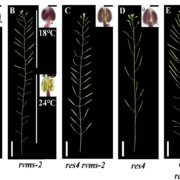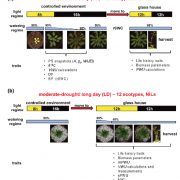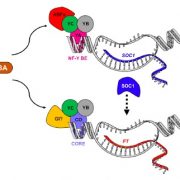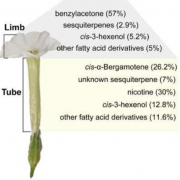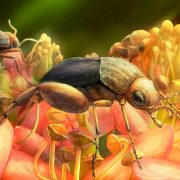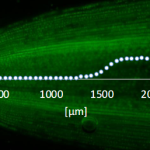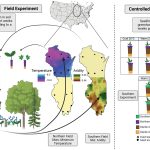A closer look at the pigmentation patterns of those South African daisies, Gorteria diffusa
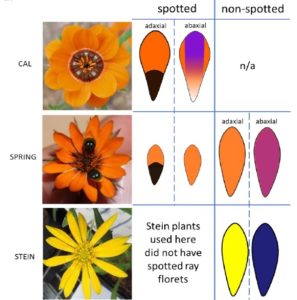 Recently, we highlighted a sexually deceptive daisy that mimics a female bee-fly to attract the male pollinators. In a recent preprint, Fattorini et al. take a closer look at the factors that specify the petal pigmentation pattern. The authors looked at three morphotypes with different spot patterns, colors, and frequencies. The authors used mass-spectrometry to identify the pigments, and found that the major pigment in the spots are malonylated anthocyanins; malonic acid acylation is thought to contribute to anthocyanin stability. Building on prior studies, the authors investigated candidate R2-R3 MYB transcription factors and identified three that are specifically correlated with anthocyanin production in the petal spots. Additional studies demonstrated that these transcription factors can induce anthocyanin production in a heterologous host, and bind to genes encoding pigment biosynthetic genes, specifically GdANS and GdDFRs, as well as a gene encoding malonyl transferase (GdMAT1). Stay tuned for more insights into the development and evolutionary foundations of this interesting daisy. Summary by Mary Williams @PlantTeaching) bioRxiv 10.1101/2023.02.20.529304
Recently, we highlighted a sexually deceptive daisy that mimics a female bee-fly to attract the male pollinators. In a recent preprint, Fattorini et al. take a closer look at the factors that specify the petal pigmentation pattern. The authors looked at three morphotypes with different spot patterns, colors, and frequencies. The authors used mass-spectrometry to identify the pigments, and found that the major pigment in the spots are malonylated anthocyanins; malonic acid acylation is thought to contribute to anthocyanin stability. Building on prior studies, the authors investigated candidate R2-R3 MYB transcription factors and identified three that are specifically correlated with anthocyanin production in the petal spots. Additional studies demonstrated that these transcription factors can induce anthocyanin production in a heterologous host, and bind to genes encoding pigment biosynthetic genes, specifically GdANS and GdDFRs, as well as a gene encoding malonyl transferase (GdMAT1). Stay tuned for more insights into the development and evolutionary foundations of this interesting daisy. Summary by Mary Williams @PlantTeaching) bioRxiv 10.1101/2023.02.20.529304


